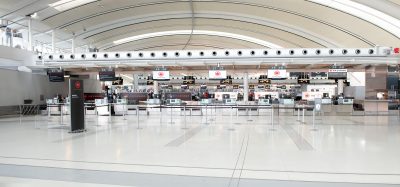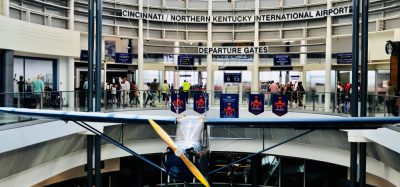Taking aim at mishandling: IATA targets a 50% reduction in mishandled bags by 2012
- Like
- Digg
- Del
- Tumblr
- VKontakte
- Buffer
- Love This
- Odnoklassniki
- Meneame
- Blogger
- Amazon
- Yahoo Mail
- Gmail
- AOL
- Newsvine
- HackerNews
- Evernote
- MySpace
- Mail.ru
- Viadeo
- Line
- Comments
- Yummly
- SMS
- Viber
- Telegram
- Subscribe
- Skype
- Facebook Messenger
- Kakao
- LiveJournal
- Yammer
- Edgar
- Fintel
- Mix
- Instapaper
- Copy Link
Posted: 31 March 2009 | Andrew Price, Head of Baggage Improvement Programme (BIP), IATA | No comments yet
Although airlines get baggage right 98% of the time, mishandling costs the industry US$3.8 billion every year. Between 2005 and 2007 the number of mishandled baggage increased three times faster than passenger growth. In the EU the mishandlings rose 28% while passenger growth increased by 9%. In the USA, mishandled baggage increased by 27%, while passenger numbers grew 10.5%.
Although airlines get baggage right 98% of the time, mishandling costs the industry US$3.8 billion every year. Between 2005 and 2007 the number of mishandled baggage increased three times faster than passenger growth. In the EU the mishandlings rose 28% while passenger growth increased by 9%. In the USA, mishandled baggage increased by 27%, while passenger numbers grew 10.5%.
Baggage is also a big issue for customers. Mishandled baggage is among the top two concerns for travellers according to the 2009 IATA Corporate Air Travel Survey (CATS), a survey of travellers conducted worldwide (see Figure 1).


Figure 1
IATA’s solution: the Baggage Improvement Programme (BIP)
Given the unprecedented economic times, how can the industry address this drain on its finances and improve service at the same time? One answer is IATA’s Baggage Improvement Programme (BIP). It proposes mishandling solutions to airlines and airports around the world that, when implemented, could cut mishandling in half by the end of 2012 – saving the industry US$1.9 billion a year. BIP is part of IATA’s industry wide Simplifying the Business (StB) initiative, which aims to cut up to $14 billion in annual industry costs.
BIP targets the 200 airports that feature in 85% of all passenger mishandling claims. The top 80 airports and the airlines that serve them will receive free dedicated consulting services from IATA’s BIP team at the rate of 20 airports per year, beginning in 2009. The remaining 120 airports will become part of a self-help programme that will feature workshops and a solutions toolkit. The self-help programme will begin in 2010.
The industry demand for BIP is strong. IATA Country Managers presented the Baggage Improvement Programme (BIP) to over 180 airlines around the world recently. 97% of them confirmed an important role for IATA, highlighting three things the association can do to address the industry’s baggage woes; develop a global methodology, bring together airlines and airports, and produce a baggage solutions toolkit.
The feedback we have received so far from the airlines really highlights the need to reduce mishandling. StB is able to deliver due to its focus on a mutually beneficial approach for everyone involved. BIP will work with airlines and airports to reduce baggage mishandling and raise the priority of baggage within the industry.
The five areas of focus
There are lots of reasons why a bag doesn’t arrive with the passenger. BIP adopts a comprehensive approach to mishandling by recommending solutions in the five areas where all baggage problems occur:
- People: staff and passengers taking the necessary steps to ensure bags can travel successfully
- Processes: simplifying baggage processes to make them more robust and faster
- Systems: ensuring systems are linked together to facilitate processing
- Identification: knowing which bags need to be processed and when
- Information: matching the intention of the passenger to the routing of the bag.
2008: Proving the concept
Last year BIP validated its solutions toolkit at nine airlines and airports around the world:
- Air France – Paris Charles de Gaulle
- American – Dallas Ft. Worth
- Delta Air Lines – Seattle
- Emirates – Dubai
- LAN Chile – Santiago
- Lufthansa – Chicago O’Hare
- Malaysia Airlines – Kuala Lumpur
- TAM – Sao Paulo
- TAP – Lisbon.
During these diagnosis visits, the BIP team were able to recommend solutions that addressed an average of over 90% of the baggage problems found – proving that these solutions work for airports large and small. Across airports and airlines, baggage transfers continue to be the major source of mishandling (see Figure 2).


Figure 2
The main cause of transfer mishandling is delays to the arriving aircraft, allowing for insufficient processing time. The BIP team observed baggage at every airport it visited that had missed a connection, due to reasons other than an inbound delay breaking the minimum connection time for the outbound flight. Examples include:
- Errors at acceptance
- Baggage hygiene – tidying straps and appropriate packing
- Gate baggage acceptance
- Transfer process complexity leading to delays
- Default chutes not being checked frequently.
How it works: welcome to a BIP diagnosis visit
Airlines have an option to either sponsor or support BIP. Sponsoring airlines benefit from the opportunity to improve baggage mishandling at an airport where they have significant passenger volume, in addition to free consultancy services from IATA’s BIP team in conducting an airport diagnosis and identifying baggage issues and solutions.
Supporting airlines will participate in the diagnosis and share baggage mishandling data with IATA. All data shared during these visits is of course confidential. A typical role for a supporting airline is to assist IATA in examining the flow of baggage to and from their flights, interlined with the sponsoring airlines. IATA will also brief the entire AOC of an airport where there is significant interest in baggage. For instance, at London Heathrow there were 66 airlines interested in the Baggage Improvement Programme, surpassed only by the 67 airlines who want to see BIP take off at Paris CDG.
Will you work with me?
The first step towards a diagnosis visit is to gain commitment from airlines and airports to participate in BIP. This programme, like any other IATA Simplifying the Business initiative, is based on a collaborative industry approach that results in mutually beneficial outcomes for everyone.
Part of the BIP programme involves getting to know the airline’s baggage environment and concerns. This is learnt during a focus session, that the BIP team then use to ensure that the diagnosis and solutions chosen are appropriate to the culture of the airline. This is the first step that is undertaken once commitment is gained and the airline is ‘on-board.’
BIP then conducts an airport diagnosis visit, where the team’s baggage experts identify and recommend solutions that address mishandling. The BIP diagnosis visit is thorough. It involves a five day visit to the airport, coordinated by the lead airline. The visit is timed to meet the peaks of the operation, so there are early starts and late finishes as needed to observe the airline schedule.
Once the team gets a first hand look at the problem areas, they can then see what solutions will address the issues that have been identified. This is captured in the BIP diagnosis report, a 30 – 70 page document that describes a generic baggage process in terms of the actual operation. Once the report is delivered, the team sits down with the lead airline and the airport to agree on a way forward. These solutions can then be implemented and the participants can see tangible cost savings and improvements in service.
The rocket science of baggage
BIP solutions are based on IATA’s extensive knowledge of airports, baggage processes and baggage handling best practices. Many of these solutions aren’t inordinately complex. BIP isn’t rocket science.
In fact, on one pilot visit all that was needed to make an impact on the mishandling rate was paint. We realised that bags were being placed too close to each other on the conveyor belt. This caused the bags to bunch up, resulting in the entire conveyor system – and by extension the check-in process – stopping. We recommended painting lines on the conveyor belt, like lanes on a highway, to make sure bags were appropriately spaced.
Of course, sometimes more complicated solutions are needed. Where necessary the team will suggest new infrastructure, RFID, and systems as necessary. These larger solutions are often worked into the five year master plans for airport development.
The hard part: implementation
Once the diagnosis report is produced, the actual implementation of recommended solutions is tracked and aggregated on an industry-wide level in order to measure BIP’s impact on the industry. The impact of every solution implemented is tracked and each solution earns its place in the toolkit through use and benefit, with less effective solutions being improved or dropped.
How do I get involved?
- Visit the BIP website for the latest project information: http://www.iata.org/stbsupportportal/ bip.htm
- Email [email protected] to find out more and speak directly with the team.
















